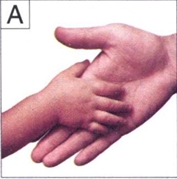
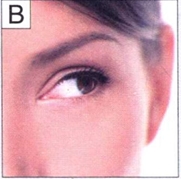
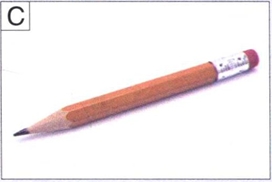
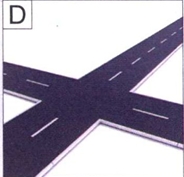
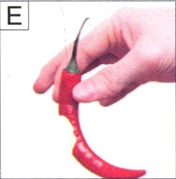
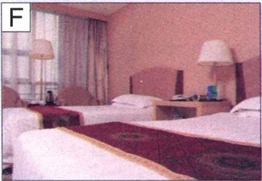
① qiānbǐ 铅笔______
② shǒu 手______
③ bīnguǎn 宾馆______
④ ná 拿______
⑤ yǎnjing 眼睛______
⑥ lùkǒu 路口______
例如:xué Hànyǔ 学 汉语
xià 下______
zuò 坐______
tīng 听______
shàng 上______
sòng 送______
ná 拿______
课文 Text 1 在办公室 In the office
Mén kāi zhe ne, qǐng jìn.
A: 门 开着呢, 请进。
Qǐngwèn, Zhāng xiānsheng zài ma?
B: 请问, 张 先生 在吗?
Tā chūqù le. Nǐ xiàwǔ zài lái ba.
A: 他出去了。你下午再来吧。
Hǎo de, xièxie!
B: 好 的, 谢谢!

English Version
A: The door is open. Come on in.
B: Excuse me, is Mr. Zhang in?
A: He’s gone out. Please come in the afternoon.
B: OK. Thank you!
New Word
1. 着 zhe part. used to indicate a state
课文 Text 2 在办公室 In the office
Nàge zhèngzài shuōhuà de nǚháir shì shuí?
A: 那个正在 说话 的女孩儿是谁?
Wǒ zhīdào tā de míngzi, tā xìng Yáng, jiào Yáng Xiàoxiao,
B: 我 知道她的名字, 她姓 杨, 叫 杨 笑笑,
tā jiějie shì wǒ tóngxué.
她姐姐是我 同学。
Nàge shǒu lǐ názhe qiānbǐ de ne?
A: 那个手里拿着铅笔的呢?
Wǒ bù rènshi.
B: 我 不认识。
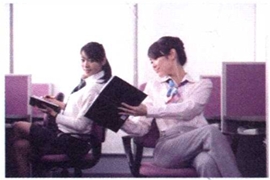
English Version
A: Who is the girl speaking?
B: I know her name. Her name is Yang Xiaoxiao. Yang is her family name. Her elder sister is my classmate.
A: What about the girl with a pencil in her hand?
B: That one I don’t know.
New Words
2. 手 shǒu n. hand
3. 拿 ná v. to hold, to take, to bring
4. 铅笔 qiānbǐn n. pencil
Proper Noun
杨笑笑 Yáng Xiàoxiao name of a person
3 在运动场 On the playground 13-3
A: Tīngshuō nǐ yǒu nǚpéngyǒu le? Wǒ rènshi tā ma?
A: 听说 你有 女朋友了?我认识 她吗?
A: I heard you have a girlfriend now? Do I know her?
B: Jiù shì wǒmen bān nàge zhǎngzhe liǎng ge dà yǎnjing, fēicháng ài xiào de nǚhái’r.
B: 就是 我们 班那个 长着 两个 大眼睛,非常 爱笑的女孩儿。
B: She is the girl in our class with big eyes and a smiling face.
A: Tā bù shì yǒu nánpéngyǒu ma?
A: 她不是有 男朋友 吗?
A: She’s already got a boyfriend, hasn’t she?
B: Nàge yǐjīng shì tā de qián nányǒu le.
B: 那个已经是她的前 男友了。
B: That’s her ex now.
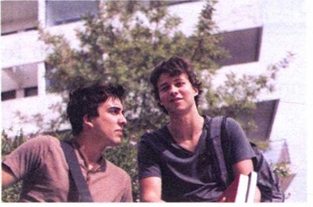
New Words
*5. 班 bān n. class, grade, team
*6. 长 zhǎng v. to grow, to develop
7. 笑 xiào v. to smile, to laugh
4 在路上 On the road 13-4
A: Qǐngwèn, zhèr lí Xīnjīng Bīnguǎn yuǎn ma?
A: 请问, 这儿离新京 宾馆 远 吗?
A: Excuse me, is Xinjing Hotel far away from here?
B: Bù yuǎn, zǒu lù èrshí fēnzhōng jiù dào.
B: 不远,走路二十分钟 就到。
B: No, it’s about a 20 minutes’ walk.
A: Nǐ néng gàosù wǒ zěnme zǒu ma?
A: 你 能 告诉我怎么 走 吗?
A: Could you tell me how to get there?
B: Cóng zhèr yìzhí wǎng qián zǒu, dàole qiánmiàn de lùkǒu zài wǎng yòu zǒu.
B: 从 这儿一直往 前走,到了 前面 的路口再 往右 走。
B: Walk straight ahead from here and turn right at the first crossing.
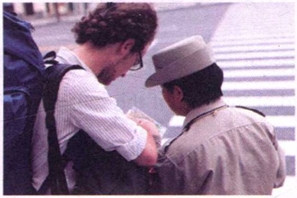
New Words
8. 宾馆 bīnguǎn n. hotel
*9. 一直 yìzhí adv. straight, all along
10. 往 wǎng prep. to, towards
11. 路口 lùkǒu n. crossing, crossroads
注释 Notes
1 结构助词“着” The Structural Particle “着”
动词加上结构助词“着”可以表示某种状态的持续。例如:
A verb followed by the structural particle “着” can indicate the continuation of a certain state. For example:
| Subject | Predicate | ||
|---|---|---|---|
| 门 | V | 着 | O |
| 门 | 开 | 着 | |
| 他们 | 穿 | 着 | 红色的衣服。 |
| (她) | 拿 | 着 | 铅笔。 |
在动词前加“没”表示否定。例如:
In the negative form, “没” is added before the verb. For example:
| Subject | Predicate | ||
|---|---|---|---|
| 没 + V | 着 | O | |
| 门 | 没开 | 着 | |
| 他们 | 没穿 | 着 | 红色的衣服。 |
| (她) | 没拿 | 着 | 铅笔。 |
在句末加“没有”表示疑问。例如:
In the interrogative form, “没有” is added at the end of the sentence. For example:
| Subject | Predicate | |||
|---|---|---|---|---|
| V | 着 | O | 没有 | |
| 门 | 开 | 着 | 没有? | |
| 他们 | 穿 | 着 | 红色的衣服 | 没有? |
| 她(手里) | 拿 | 着 | 铅笔 | 没有? |
2 反问句 “不是……吗” The Rhetorical Question“不是……吗”
“不是……吗” 常用来表示提醒或者表达说话人的不理解、不满等。
例如:
“不是……吗”is often used to remind someone of something or to show confusion or dissatisfaction. For example:
(1)不是说今天有雨吗?怎么没下?
(2)你不是北京人吗?怎么不会说北京话?
(3)(她是你的女朋友?)她不是有男朋友了吗?
3 介词 “往” The Preposition“往”
介词 “往” 常常用来指示方向。例如:
The preposition “往”is often used to indicate direction. For example:
(1)从这儿往前走,就是我们学校。
(2)你看,往左走是医院,往右走是银行。
(3)从这儿一直往前走,到了前面的路口再往右走。

Comments